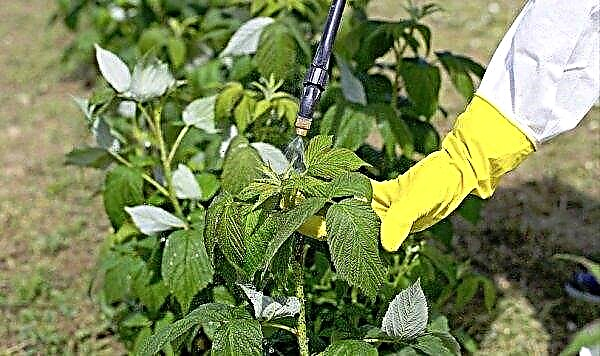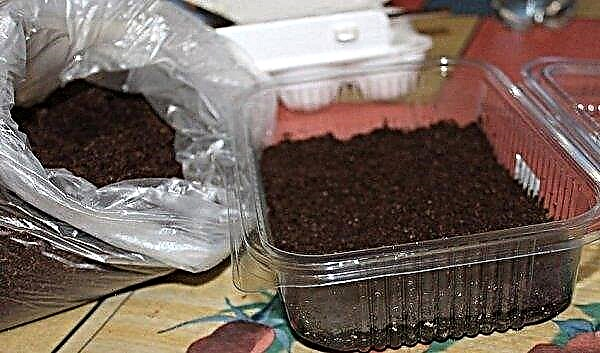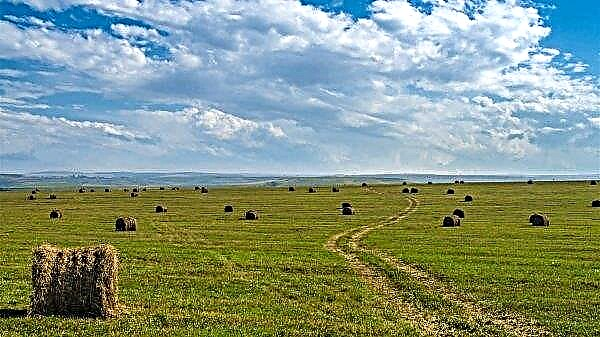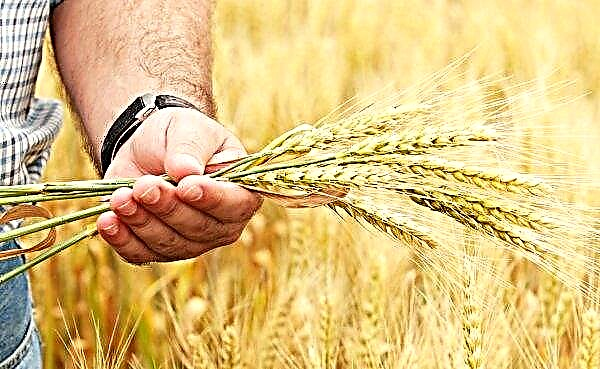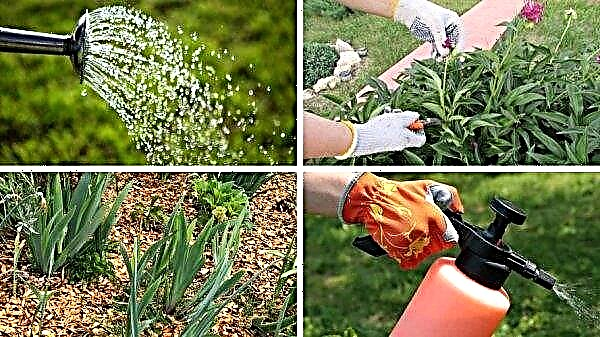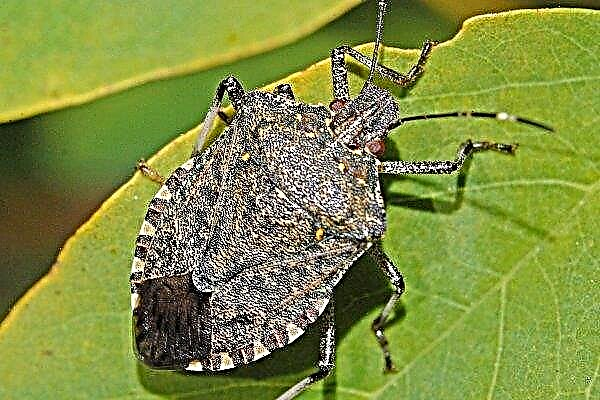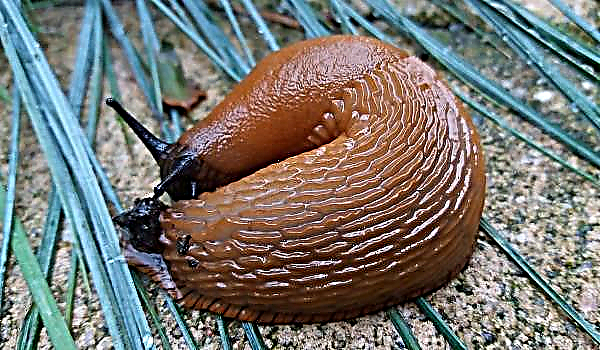Nutrient farming is a relatively new livestock industry, but already in demand and popular. Profitability of production is high largely due to the fecundity of animals. The features of the breeding of water rodents will be discussed in the article today.
Parenting
The average fertility rate for nutria is 5-6 individuals per litter; a maximum of a female can bring 18 puppies.
Productivity depends on several factors:
- conditions of detention;
- readiness of animals for mating (hunting);
- age and health of parents.
The reproductive age of nutria
For breeding animals need mature individuals with a healthy instinct for reproduction. With proper maintenance, nutria become sexually mature at the age of 5 months.

But with early mating, there are some nuances:
- a problem with the conception of offspring later;
- small offspring;
- a large number of stillborn puppies;
- male poorly covers;
- offspring with low viability.
If you are late with the mating, the animals grow fat and lose their sexual instincts. To get healthy offspring, you need to mate healthy individuals weighing about 4 kg. The age of the female is 6–8 months, the age of the male is 7–9 months.
Important! It is not recommended to happen to a female for more than 3 years: a manifestation of aggression to her own offspring is possible, up to cannibalism.
Sex determination in animals
Appearance and behavior of females and males are no different, therefore, to determine who is who can only be on the genitals of animals. An individual is taken at the withers in the back of the head, turning the stomach upside down, examining the genitals. 
A male at a distance of 3-5 cm from the anus has a penis directed upwards, where the testicles are palpated. A female has a sexual gap near the anus.
Signs of hunting
The first symptoms of readiness for mating can be seen in the behavior:
- The female shows unusual activity: she runs around the cage, scratches the floor with her paws, raises her tail. She may experience frequent urination, loss of appetite. The genitals are filled with blood, become a bright red color.
- The male is interested in a quiet whistling, his body shakes with trembling.
- After replanting, the individuals sniff each other, the females fake jumping, flirting with the male.
- The activity of males can be constant, estrus in females for periods of about 1 time per month, hunting lasts about 40 hours.
For inexperienced farmers, the question arises: why does a female sometimes chase her cage partner without letting her in. A nutria can attack a mating partner if it has not yet estrus (mucous discharge from the genitals).
Video: how to determine the “hunt” of a female nutria
Mating process
To successfully propagate their wards, the farmer must delve into all the nuances of the process. During mating, there are about 4-6 coits lasting up to 2 minutes. Then follows a short rest. The greater the number of coituses, the greater the number of puppies you can expect in a litter.
Important! Before creating a group or family, you need to examine the genitals of the male inseminators. The penis can be covered with rolling hair, which will interfere with mating - the body needs to be cleaned.
Methods of breeding nutria
Choosing the frequency of incidents and the season to replenish the herd, you need to consider the purpose of breeding animals: meat or skins, both directions. For this purpose, a schedule is drawn up, for example, to obtain an offspring at the beginning of the year, mating is carried out in the 3rd decade of August, the second mating is assigned to March - May. Thus, they get the quality and quantity of offspring without damage to herd productivity.
Mowing method
This option is suitable for breeding inexperienced, not yet whelping females. A group of about 14 individuals of the same age and weight are planted with a senior experienced producer. If mating occurs, after 1.5–2 months, pregnant individuals are placed in separate cells.
 The driven method of reproduction is similar to the mowing variant, but is relevant on an industrial scale. The method differs in the number of herds: 10–20 males are planted per 100–200 females.
The driven method of reproduction is similar to the mowing variant, but is relevant on an industrial scale. The method differs in the number of herds: 10–20 males are planted per 100–200 females.
Replanting
Manual method or replanting is the formation of one productive pair. The female is planted in a cage to the producer and observe their behavior. If the animals do not chase each other, show interest, then after breeching, in due time, they will be brought together again.
Did you know? Nutria can be under water for 10 minutes. This ability gives them a special structure of the nostrils with the "obstructive" muscle.
Family method
The family is formed of 3-5 females raised together, which may be related, and an unrelated male. The family group is maintained for the entire breeding period. Babies are taken away from the family after 2 months, they are raised separately.  This method has one feature - it is difficult to establish kinship on the maternal side if several individuals have been born. A significant minus is that with a large number of adult animals there is a risk of trampling of the cubs.
This method has one feature - it is difficult to establish kinship on the maternal side if several individuals have been born. A significant minus is that with a large number of adult animals there is a risk of trampling of the cubs.
Pregnancy and childbirth
The onset of pregnancy can be detected by external signs and with the help of feeling:
- at 28-30 days, mucous reddish discharge from the female genitals appears;
- on the 45-50th day, embryos are felt in the abdominal cavity (rounded formations with a diameter of 2-3 cm);
- nipples swell in 60–70 days of pregnancy;
- on the 127–132th day, childbirth begins.
Possible problems
Due to errors in the maintenance of pregnant nutria, dead puppies are born. In difficult births, the female, trying to pull the cub out, can independently bite him. And due to a lack of vitamins, especially primiparous individuals, eat healthy cubs.
Video: how to give nutria
- Proper care for pregnant nutrias:
- sufficient space in the cell;
- dry and clean litter;
- the availability of clean water in constant access;
- lack of harsh sounds near housing;
- necessarily include juicy and protein foods in the diet;
- The food includes vitamins - phosphorus, calcium, vitamin A.
Puppy care
Nutrials mature quickly, after 2 weeks their weight doubles, after 60 days - 5 times. The offspring shows amazing independence: on the 2nd day after birth, the cubs learn to swim and study the space around them. If the birth fell on winter time, the room with the cubs must be insulated to eliminate the risk of disease.
Did you know? The location of the nipples on the sides of the sternum of the nutria mom allows her to feed the cubs right in the water.
Usually, the mother feeds the offspring for no more than 30 days, after which the chickpeas switch to an adult diet. The menu of young animals for the most part consists of succulent feed. Also in the diet you need to add root vegetables, concentrated feed and vitamins, necessarily 0.5 g of salt.
 Healthy young growth is active, it has a shiny coat. Puppies play, bathe, quickly gain weight.
Healthy young growth is active, it has a shiny coat. Puppies play, bathe, quickly gain weight.
Nutria nibble tails: causes, prevention
Breeders face the phenomenon of spoilage by animals of their own tails. The reason why animals bite their tail, consider the lack of nutrients in the diet.
Experienced nutrient growers recommend including in the menu, especially in winter when there is little succulent feed, the following ingredients:
- vitamins - A, B1, B6, B9, B 12, D, E (the “Pushnovit” complex);
- meat and bone meal, fish meal;
- chalk and salt;
- branches of bushes and trees (acacia, apricot, cattail, birch, vine, poplar).
The gnawed tail is removed, preferably by a veterinarian, then the wound is cauterized with iodine or another antiseptic.
Breeding nutria requires attention and familiarity with the behavior of animals. The health of the wards is affected by the conditions of detention and ensuring a balanced diet.

